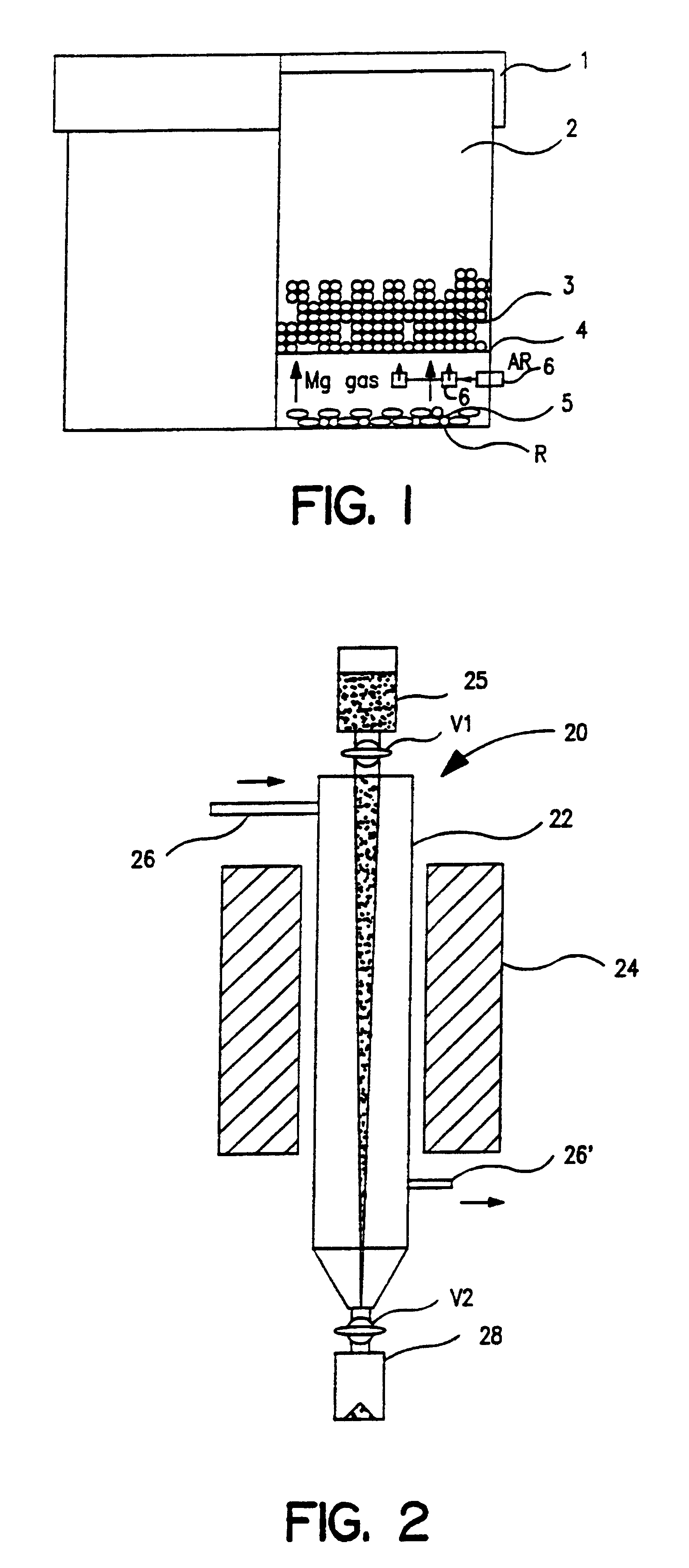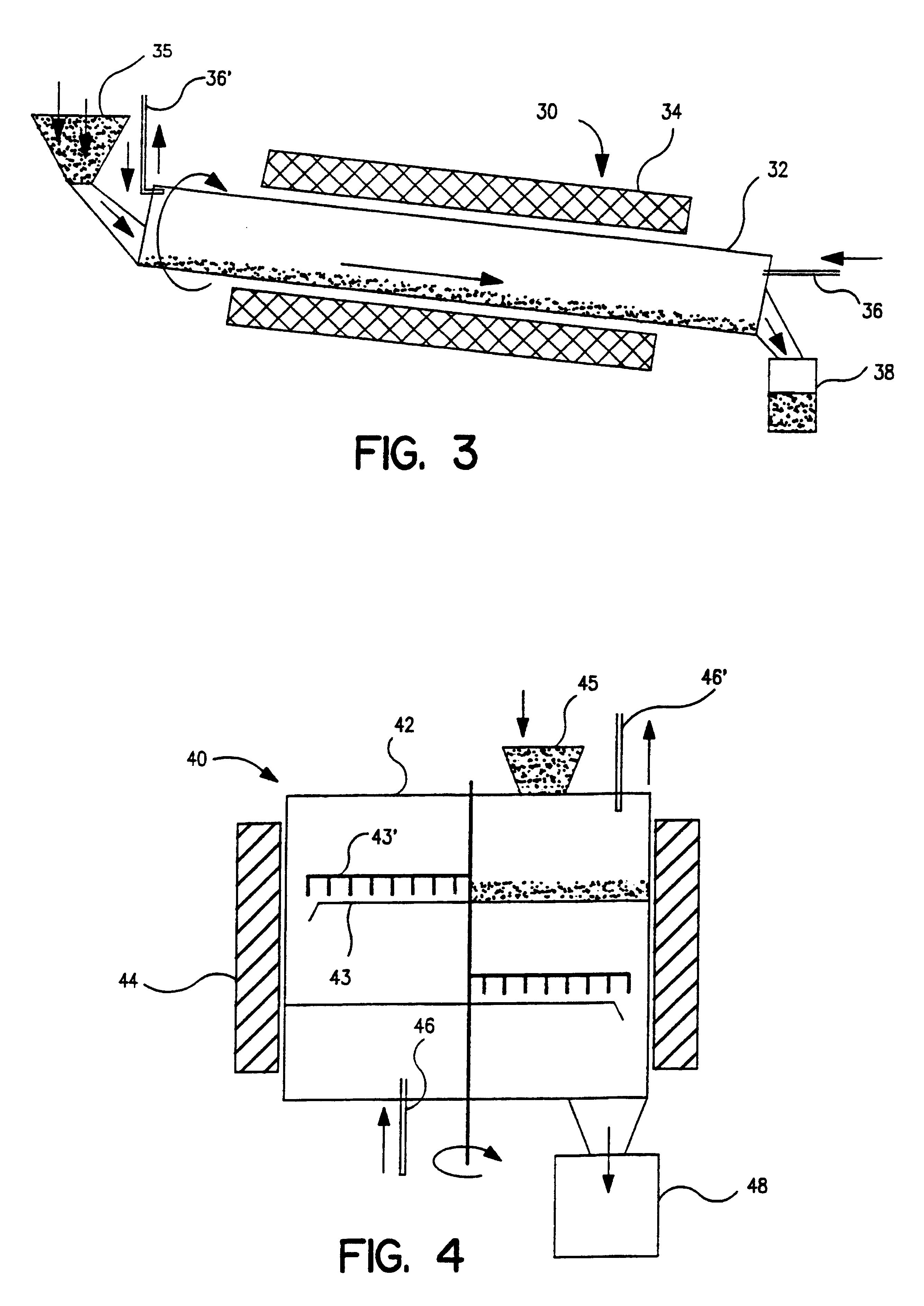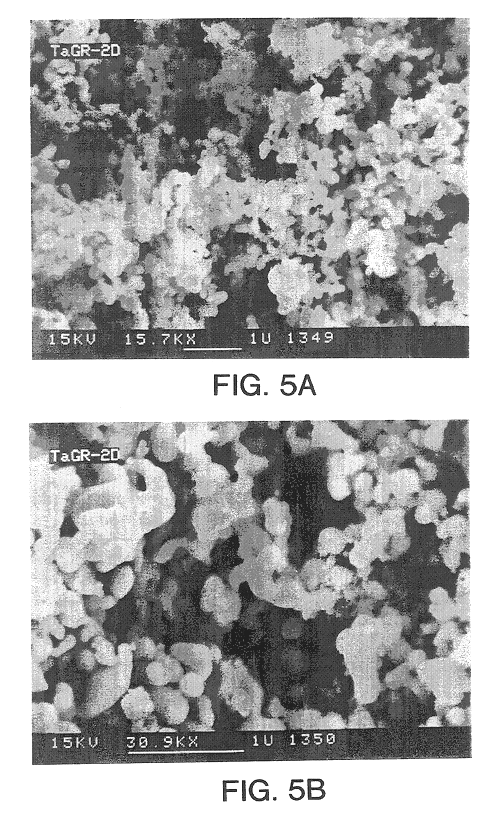Metal powders produced by the reduction of the oxides with gaseous magnesium
a technology of oxides and metal powders, which is applied in the direction of electrolytic capacitors, capacitors, transportation and packaging, etc., can solve the problems of difficult control of process, inability to use dendritic powder directly in capacitor applications, and inability to meet the requirements of use, etc., and achieves high performance.
- Summary
- Abstract
- Description
- Claims
- Application Information
AI Technical Summary
Benefits of technology
Problems solved by technology
Method used
Image
Examples
example 2
Referring to FIG. 1, a bed (3) of 200 grams of tantalum pentoxide w as placed on a porous tantalum plate 4 suspended above magnesium metal chips (5) contained in a tantalum boat. The container was covered with a tantalum lid and placed in a sealed retort with argon (Ar) passed through the sealed volume via nozzle (6). The boat was heated to and maintained at 1000.degree. C. for six hours in an argon / magnesium gas atmosphere utilizing a bed (5) of solid magnesium chips maintained in a region wholly separate from the oxide bed. After cooling to room temperature, the product mixture was passivated by introducing argon-oxygen mixtures, containing 2, 4, 8, 15 inches (Hg, partial pressure) of O.sub.2 (g), respectively, into the furnace. Each mixture was in contact with powder for 30 minutes. The hold time for the last passivation with air was 60 minutes.
The magnesium oxide was separated from the tantalum powder by leaching with dilute sulfuric acid and then rinsed with high purity water t...
example 3
Tantalum powder with surface area of 57,000 cm.sup.2 / gm made according to the procedure in Example 2 was deoxidized by blending the powder with 2 W / W % Mg and heating at 850.degree. C. for two hours in an argon atmosphere. Separation of reducing agent source and oxide is not necessary in this follow up deoxidation step. The deoxidized powder was allowed to cool and then passivated, leached, and dried. A SEM (100,000.times.) of the deoxidized (finished) powder appears at FIG. 7A and a SEM (70,000.times.) of finished sodium reduced powders appears at FIG. 7B. the morphology differences are apparent. After doping with 100 ppm P by adding an appropriate amount of NH.sub.4 H.sub.2 PO.sub.4, the powder was pressed into pellets weighing 0.14 grams at a press density of 5.0 g / cc. A SEM of the further deoxidized powder is given at FIG. 6. The pellets were sintered in vacuum at 1200.degree. C. for 20 minutes. The pellets were anodized to 30 volts in 0.1 volume percent (V / V %) H.sub.3 PO.sub....
example 4
Powder with surface area of 133,000 cm.sup.2 / gm and bulk density of 27.3 g / m.sup.3 made as described in Example 2 was treated as in Example 3. A SEM (56,600.times.) of the finished powder appears at FIG. 7C. Pellets made from the deoxidized powder were anodized to 16V using the conditions in Example 3. The average capacitance of the anodized pellets was 160,000 .mu.F (V) / gm.
PUM
| Property | Measurement | Unit |
|---|---|---|
| Length | aaaaa | aaaaa |
| Length | aaaaa | aaaaa |
| Fraction | aaaaa | aaaaa |
Abstract
Description
Claims
Application Information
 Login to View More
Login to View More - R&D
- Intellectual Property
- Life Sciences
- Materials
- Tech Scout
- Unparalleled Data Quality
- Higher Quality Content
- 60% Fewer Hallucinations
Browse by: Latest US Patents, China's latest patents, Technical Efficacy Thesaurus, Application Domain, Technology Topic, Popular Technical Reports.
© 2025 PatSnap. All rights reserved.Legal|Privacy policy|Modern Slavery Act Transparency Statement|Sitemap|About US| Contact US: help@patsnap.com



